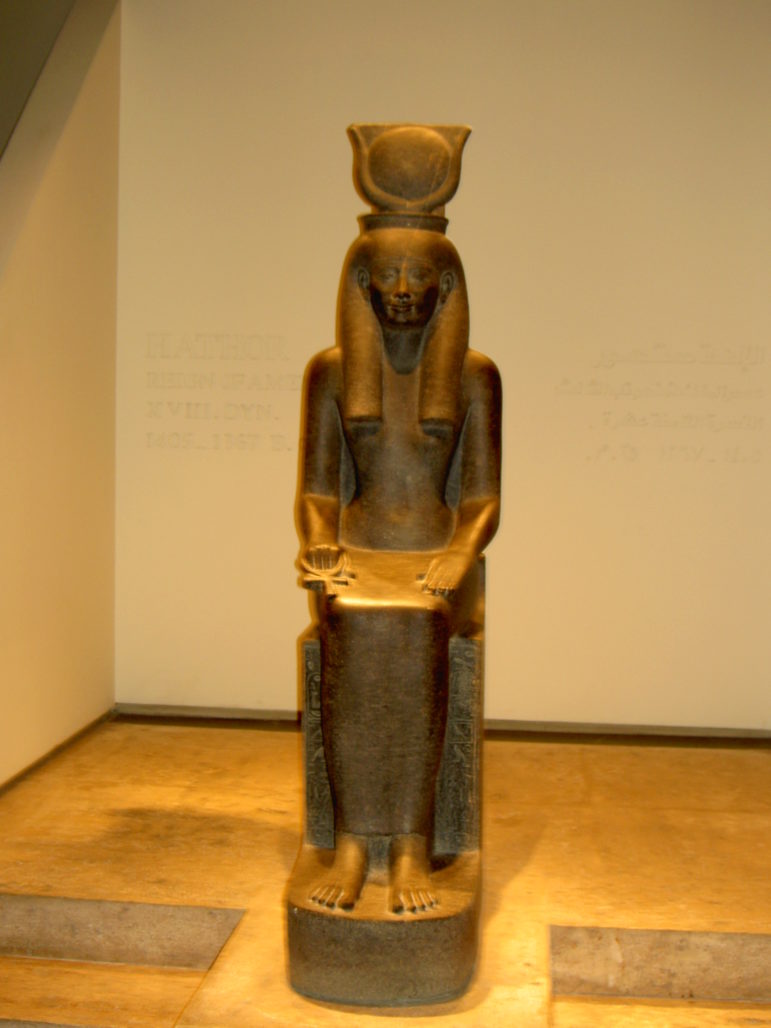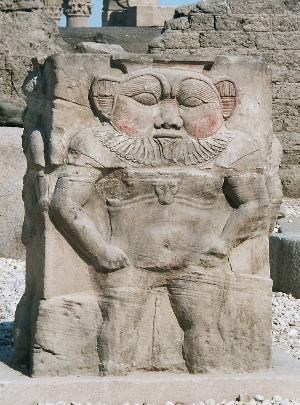TWH – Infra-red technology recently revealed unseen tattoos on seven Egyptian mummies. This more than doubles the total number of tattooed mummies found in Egypt.
These mummies did not come from the royal world. They came from the necropolis of Deir-el-Medina, which was the burial site for the community of skilled workers that built and decorated the tombs of royalty in the Valley of the Kings.

The surviving ruins of the Deir el-Medina workman’s village at Thebes, Upper Egypt – Image credit: Andrew® – CC BY 2.0,
Of these 13 known tattooed Egyptian mummies, only one appeared to be male. In life, these women of Deir-el-Medina lived as healers or priestesses.
One mummy had 30 tattoos. Another mummy had three neck tattoos: an Eye of Horus and a seated baboon on each side.
How old is tattooing?
Otzi, the Cooper Age hunter found on the Austrian/Italian border had 61 tattoos on his body. As he lived around 3200 B.C.E., his tattoos mark the earliest known tattoos.
Otzi’s tattoos take the form of horizontal or vertical lines. Skeletal evidence indicates that Otzi lived with arthritic pain. His tattoos match the site of likely arthritic pain.
The history of tattoos has a high risk for survival bias. If the skin has decayed, any tattoos on it will decay as well. Tattoo pigment fades over time. For many reasons, skin may darken and shrink, making it difficult to notice a tattoo. Tattooing may be much older than the earliest known tattoo.
Tattoo tech
Two tattoo techniques co-existed in the ancient world: sewing and puncturing.
In the sewing method, the tattoo artist blackened some twine with soot. They would then thread the needle and sew it into the skin.
As the needle went into the skin, the soot on the twine would then become trapped under the skin. When finished, the artist would rub oil over the area. The artist would use this method to created tattoo lines, like those on Otzi.
In the puncture method, the tattoo artist would take a pin, needle, or awl to break the skin. They would then dip that pin, needle or awl in the pigment and push it under the skin. The artist would use this method to create dots, lines, or figures. The Egyptians used the puncture method.
Egyptian tattooing in the Middle Kingdom from 2055 to 1650 B.C.E.
The Middle Kingdom which spanned the 11th through the 13th Dynasties, produced some of the earliest known Egyptian tattoos.
The early part of this period produced the three most famous and studied tattooed mummies. All three had links to the goddess Hathor.

Statue of the Goddess Hathor, Luxor Museum, Egypt – CC BY-SA 2.5
One mummy, Amunet, had been a priestess of Hathor in the Court of Pharaoh Mentuhotep II.
Amunet bore tattoos on her left shoulder and breast, and her right forearm. On her stomach, she had two groups of dots and dashes forming an elliptical pattern. She had tattoos above her navel and around her solar plexus. A rectangular tattoo of small lines covered almost all the lower belly above the pubic bone.
In the middle of her right thigh, she had diamond shapes made up of dots. She also showed evidence of scarification in the groin, with three parallel lines.
In life, the other two mummies had been dancers of Hathor. Their graves lay close to that of Amunet. Dotted lozenge shapes crossed their chests, arms, legs, and abdomen. Sixteen dots formed each lozenge.
Without some Egyptian text explaining their meaning, no one today can know what those tattoos meant. Egyptian texts remain silent about tattoos. Tattoos, on the female belly, however, would expand and change shape with pregnancy. Those changes suggests a link to pregnancy and new life, both within Hathor’s realm.
Egyptian tattooing in the New Kingdom from 1550 to 1069 B.C.E.
In the New Kingdom, 18th through the 20th dynasties, tattoos of two gods, Bes and Taweret, begin to appear.
The god, Bes, and the goddess Taweret, protected childbirth. Egypt had high death rates for childbirth and infancy. The preferred site for these tattoos would be at the top of one or both thighs. These tattoos may have been a magico-religious charm or spell-work to protect childbirth.

Goddess Taweret statuette – Image credit: Jon Bodsworth – WikiCommons

God Bes – Hajor, December 2002 Released under CC BY-SA 3.0
These tattoos only appeared on musicians and dancers. Musicians and dancers were devotees of the goddess Hathor, patron of dance, motherhood, music, and sexuality. Elite households and temples would have musicians and dancers on “staff.”
Current evidence seems to indicate that in ancient Egypt, tattooing belonged primarily to the female sphere. It is possible that tattoos may have functioned as protective charm against the dangers of childbirth. Some tattoos may have also indicated a relationship with the goddess Hathor.
Modern Pagans who acquire tattoos as charms, spell-casting, or marking a rite of passage may very well be continuing an ancient tradition and practice.
The Wild Hunt is not responsible for links to external content.
To join a conversation on this post:
Visit our The Wild Hunt subreddit! Point your favorite browser to https://www.reddit.com/r/The_Wild_Hunt_News/, then click “JOIN”. Make sure to click the bell, too, to be notified of new articles posted to our subreddit.